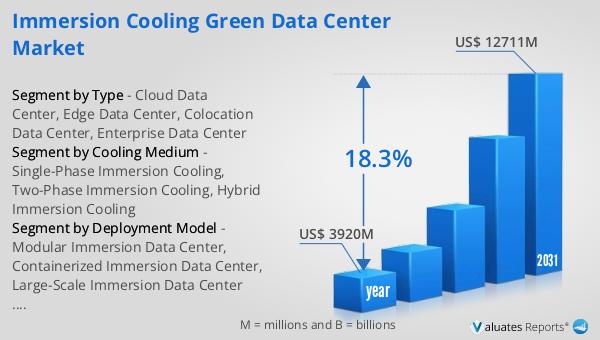What is Label Free Detection - Global Market?
Label-free detection is a sophisticated technology used in various scientific and industrial applications to analyze biomolecular interactions without the need for fluorescent or radioactive labels. This method is gaining traction globally due to its ability to provide real-time data and reduce the complexity and cost associated with traditional labeled detection methods. The global market for label-free detection is expanding as industries and research institutions seek more efficient and accurate ways to study biological processes. This technology is particularly valuable in drug discovery, diagnostics, and life sciences research, where understanding the interactions between molecules is crucial. By eliminating the need for labels, researchers can observe natural interactions in their native state, leading to more reliable data. The market is driven by advancements in technology, increasing demand for high-throughput screening methods, and the growing focus on personalized medicine. As more companies and research institutions recognize the benefits of label-free detection, the market is expected to continue its upward trajectory, offering new opportunities for innovation and development in various fields.

Instruments, Consumables, Biosensor chips, Microplates in the Label Free Detection - Global Market:
Instruments used in label-free detection are crucial for the accurate measurement and analysis of biomolecular interactions. These instruments, such as surface plasmon resonance (SPR) systems, bio-layer interferometry (BLI) devices, and isothermal titration calorimetry (ITC) machines, provide researchers with the tools needed to conduct precise and real-time analysis. SPR systems are widely used due to their ability to measure changes in the refractive index near a sensor surface, which indicates molecular binding events. BLI devices, on the other hand, use optical interference to measure the thickness of a biological layer on a sensor tip, providing insights into binding kinetics. ITC machines measure the heat change associated with molecular interactions, offering a direct method to study binding thermodynamics. Consumables, such as reagents and buffers, are essential for maintaining the accuracy and reliability of these instruments. They ensure that the experimental conditions are optimal for detecting interactions without interference. Biosensor chips are another critical component, as they serve as the platform where interactions occur. These chips are often coated with specific molecules to capture target analytes, allowing for the detection of binding events. Microplates, used in high-throughput screening, enable the simultaneous analysis of multiple samples, increasing efficiency and productivity in research settings. The integration of these components in label-free detection systems allows for comprehensive analysis of biomolecular interactions, providing valuable insights into the mechanisms of action of drugs, proteins, and other biological entities. As the demand for label-free detection grows, advancements in these instruments and consumables are expected to enhance their capabilities, making them indispensable tools in modern research and development.
Contract Research Organizations (CRO), Pharmaceutical and Biotechnology Companies, Academic Research Institutes, Others in the Label Free Detection - Global Market:
Label-free detection technology is widely used across various sectors, including Contract Research Organizations (CROs), pharmaceutical and biotechnology companies, academic research institutes, and other industries. In CROs, label-free detection is employed to provide clients with detailed analysis of biomolecular interactions, which is essential for drug discovery and development. These organizations rely on the technology to offer high-quality data that can accelerate the research process and reduce costs. Pharmaceutical and biotechnology companies use label-free detection to streamline their research and development efforts. By providing real-time data on molecular interactions, the technology helps these companies identify potential drug candidates more efficiently, leading to faster development timelines and reduced risk of failure. Academic research institutes benefit from label-free detection by gaining deeper insights into fundamental biological processes. The technology allows researchers to study interactions in their native state, leading to more accurate and meaningful results. This is particularly important in fields such as molecular biology, biochemistry, and pharmacology, where understanding the intricacies of molecular interactions is crucial. Other industries, such as food and beverage, environmental monitoring, and clinical diagnostics, also utilize label-free detection to improve their processes and products. In these sectors, the technology is used to ensure quality control, monitor environmental changes, and develop new diagnostic tools. Overall, the versatility and efficiency of label-free detection make it a valuable asset across a wide range of applications, driving its adoption and growth in the global market.
Label Free Detection - Global Market Outlook:
The global market for label-free detection was valued at approximately $917.3 million in 2023, with projections indicating a growth to around $1,507.4 million by 2030. This represents a compound annual growth rate (CAGR) of 6.9% during the forecast period from 2024 to 2030. This growth is driven by the increasing demand for advanced analytical techniques in various industries, including pharmaceuticals, biotechnology, and academic research. The North American market, a significant contributor to the global landscape, is also expected to experience substantial growth during this period. Although specific figures for the North American market were not provided, the region's robust research infrastructure and strong presence of key industry players suggest a positive outlook. The anticipated growth in the label-free detection market reflects the technology's ability to meet the evolving needs of researchers and industry professionals seeking more efficient and accurate methods for studying biomolecular interactions. As the market continues to expand, it is likely to foster innovation and development, offering new opportunities for companies and research institutions to enhance their capabilities and achieve their objectives.
| Report Metric | Details |
| Report Name | Label Free Detection - Market |
| Forecasted market size in 2030 | US$ 1507.4 million |
| CAGR | 6.9% |
| Forecasted years | 2024 - 2030 |
| Segment by Type: |
|
| Segment by Application |
|
| By Region |
|
| By Company | Bio-Rad Laboratories, General Electric, Bioptix, Attana, Ametek, Inc, Corning, Inc, Pall Corporation, Danaher Corporation, X-body Biosciences, Roche Diagnostics |
| Forecast units | USD million in value |
| Report coverage | Revenue and volume forecast, company share, competitive landscape, growth factors and trends |
